How to Grow and Care for Delphinium, the Birth Flower of July
By Jill Brooke

Delphiniums are not only the flower for July but represent cheerfulness and goodwill. In fact, delphiniums are believed to be able to express feelings of encouragement and joy when people see them.
These are one of the best go-to perennials that easily entertains in a garden and then can be a cutting flower for a vase. In fact, delphiniums have been a popular flower in cottage gardens around the world since the 1500s.
Plant them at the back of the garden because these showy colorful plants tower over other flowers and can grow up to six feet tall. (Though most are 3 feet).
Like many other flowers that bloom in a rainbow of colors, each hue conveys a different meaning. Pink can be fickleness, white represents a happy go lucky disposition while purple is the color linked to having an open heart and wanting to love.
In all its interpretations for those who explore the language of flowers, one trait prevails. The delphinium suggests strong bonds of love and affability.
Well, how can’t you feel that upon seeing this bouncy exuberant flower with its tall elegant stalks that fill up a vase impressively with little fuss. In a garden, it stands out among other shorter flowers.
Trending New Delphiniums
We contacted the owners of England’s Blackmore & Langdon, who have been delphinium specialists since 1901. The fourth generation family of delphinium growers includes brothers Nick, Simon and Stephen.
So what is trending now? With all the weddings taking place around the globe, tall white flowers to complement peonies and roses are very popular. Simon Langdon recommends the following choices which have become florist favorites.
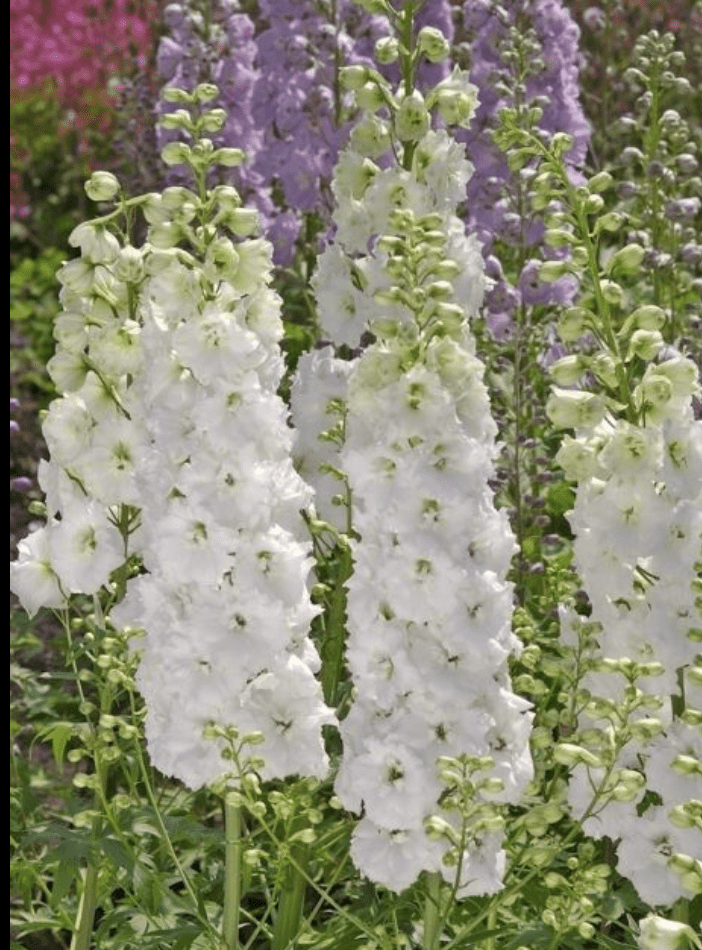
White
“Moonbeam” –
“Jill Curley”
“Constance Rivett” with an option of “Sandpiper for “a white with a black bee.”

Blue
“Delphinium ‘Faust” – a dark ultramarine blue
“Blue Dawn’ – a mid-blue with a black bee and a delicate pink fleck.
“Blue Dawn,” says Simon Langdon will be a special flower for wedding planners for that unexpected splash of pink that also compliments other flowers.
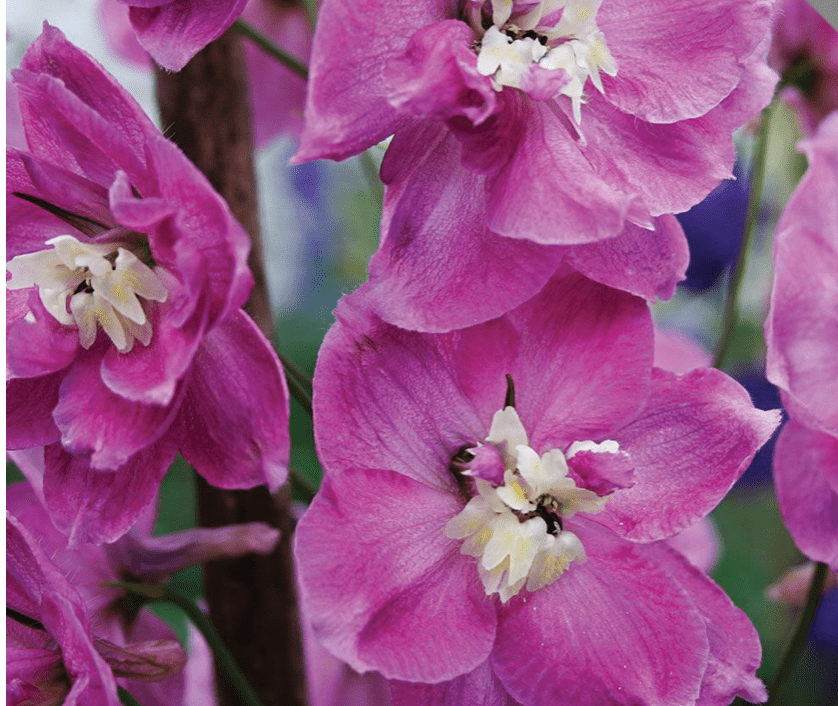
Pink
Strawberry Fair is a special pink variety that is growing in popularity. around the globe for its pop of pink.
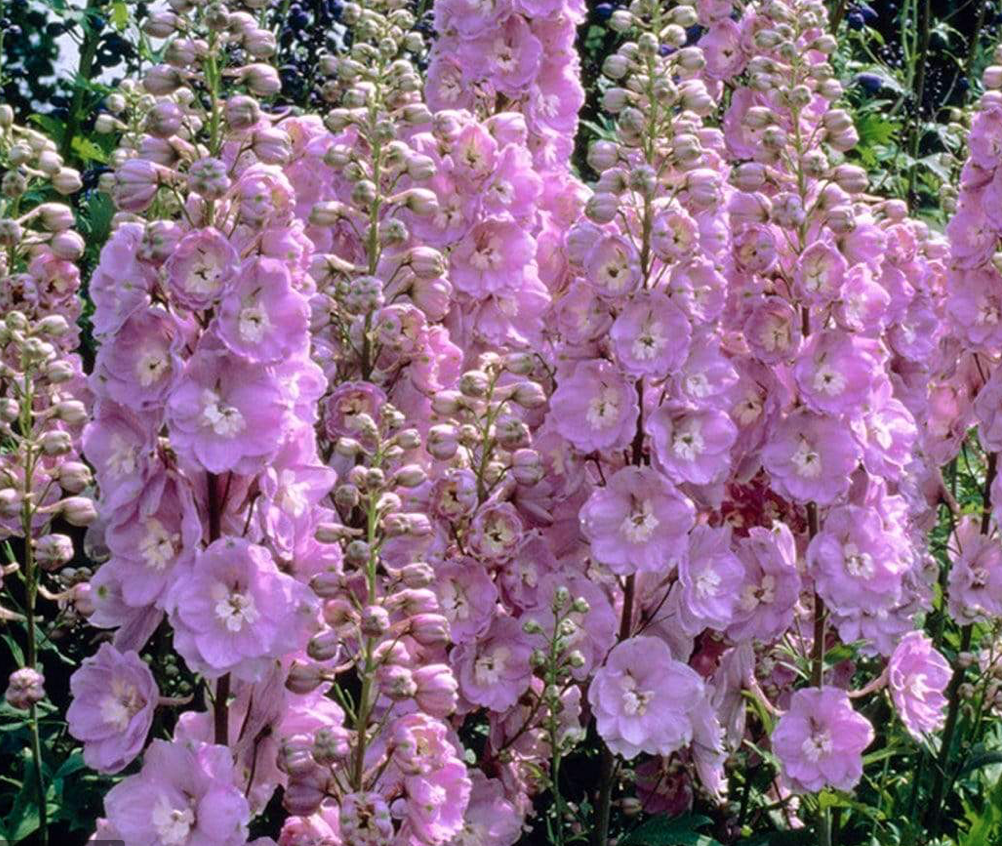
There’s always an elegance to these flowers – which maybe is why they are Prince Charles’ favorite blooms.
To give you some ideas of how to utilize these fab flowers, which can be purchased at florists or sometimes at markets, we’ve collected some arrangements made by talented florists.
And then we will provide some growing tips in case you want to grow these reliable flowers in your own garden.
The following are some floral arrangements to give you inspiration for

Scotts Flowers NYC, a family-owned and operated luxury florist serving New Yorkers since 1947
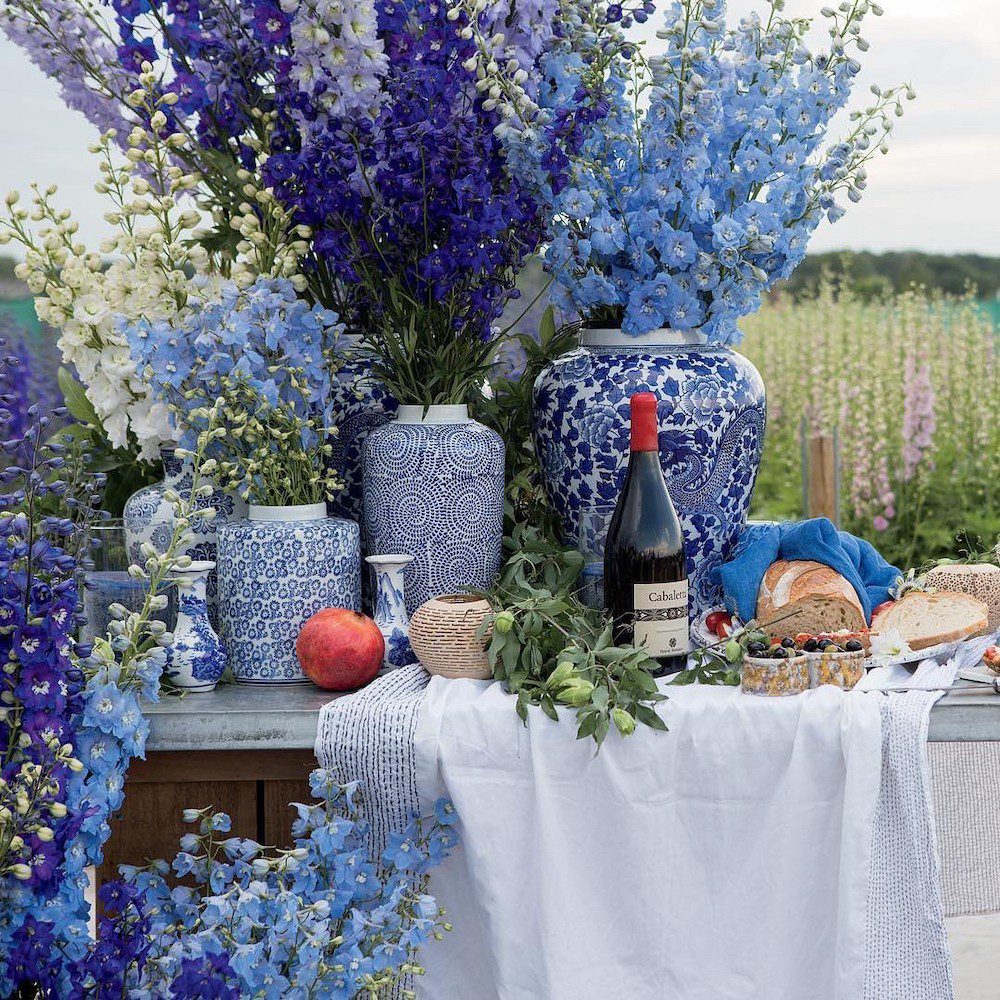
Forget sparse – Florists in the Field’s Greg Campbell and Erick New create welcoming creative and abundant arrangements in Memphis, Tennessee.
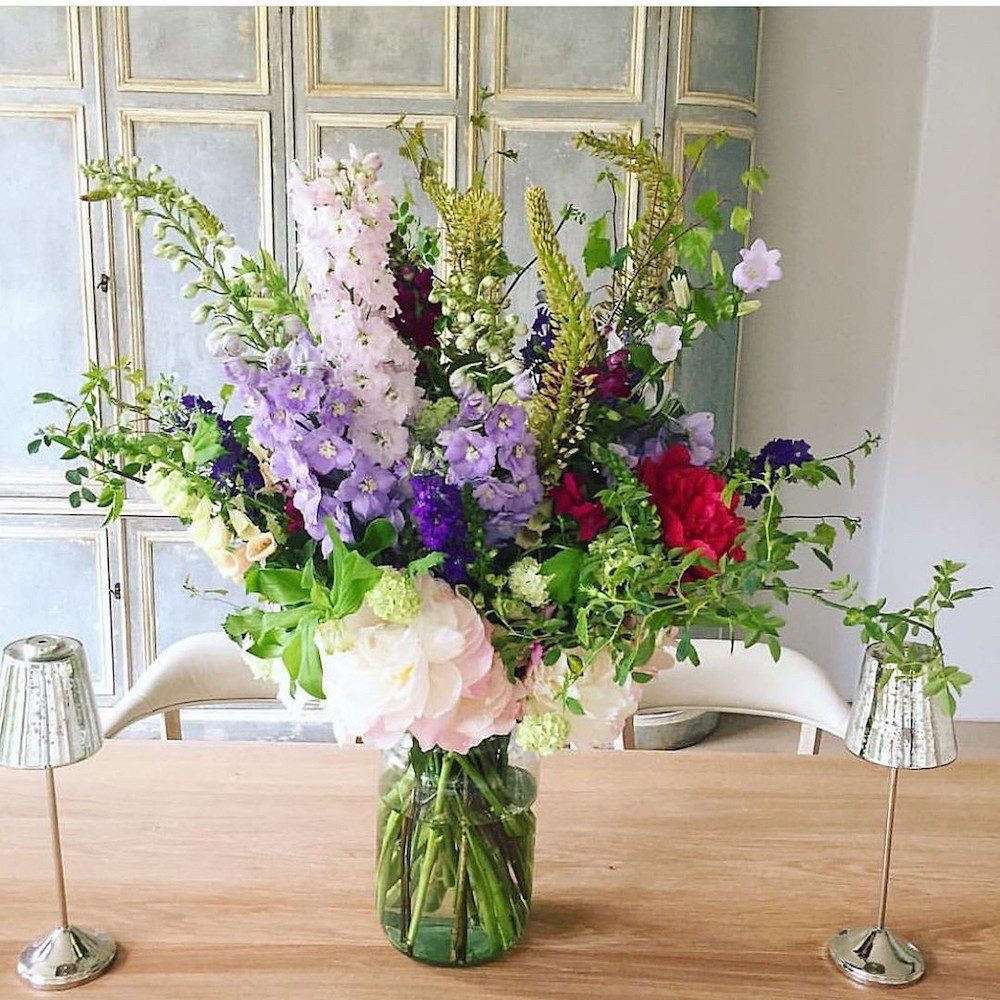
Alice Strange Flowers always has an ethereal quality to their work.
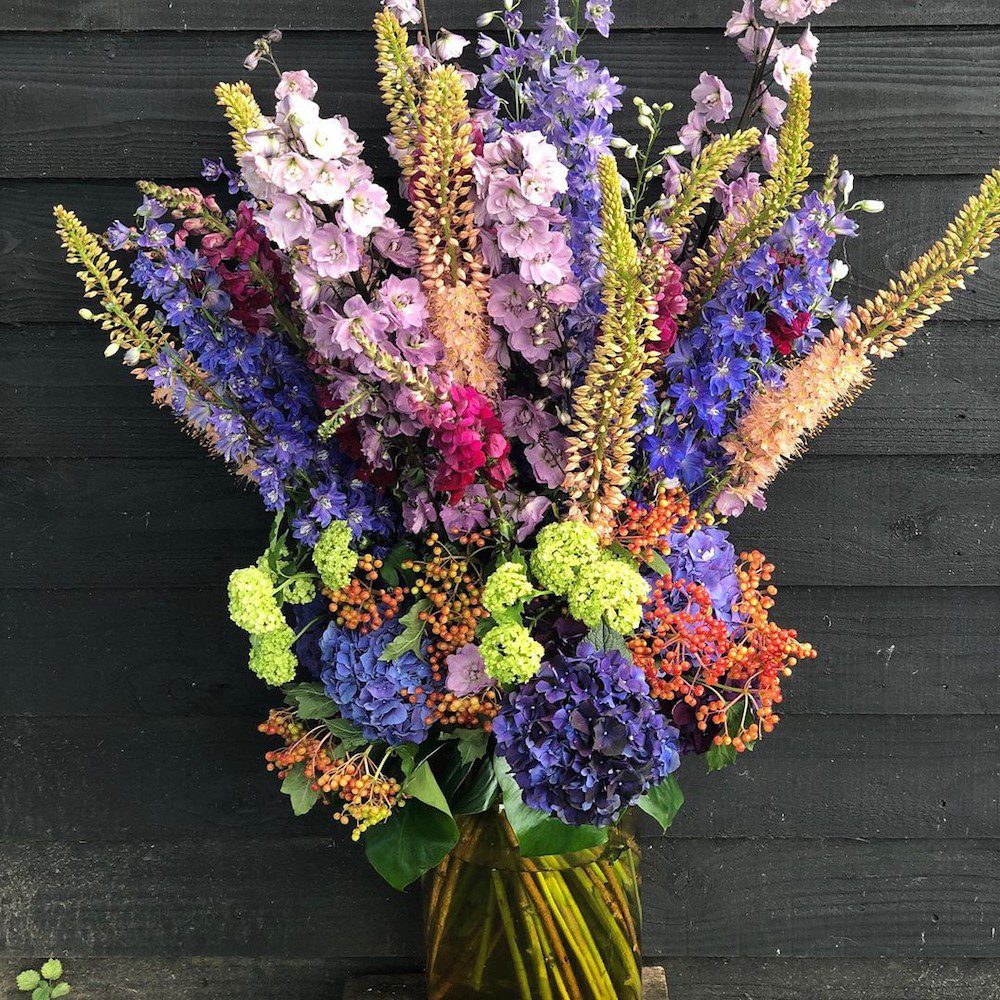
Author Paula Pryke in an international floral designer who isn’t afraid of color. She also is the author of 18 books.
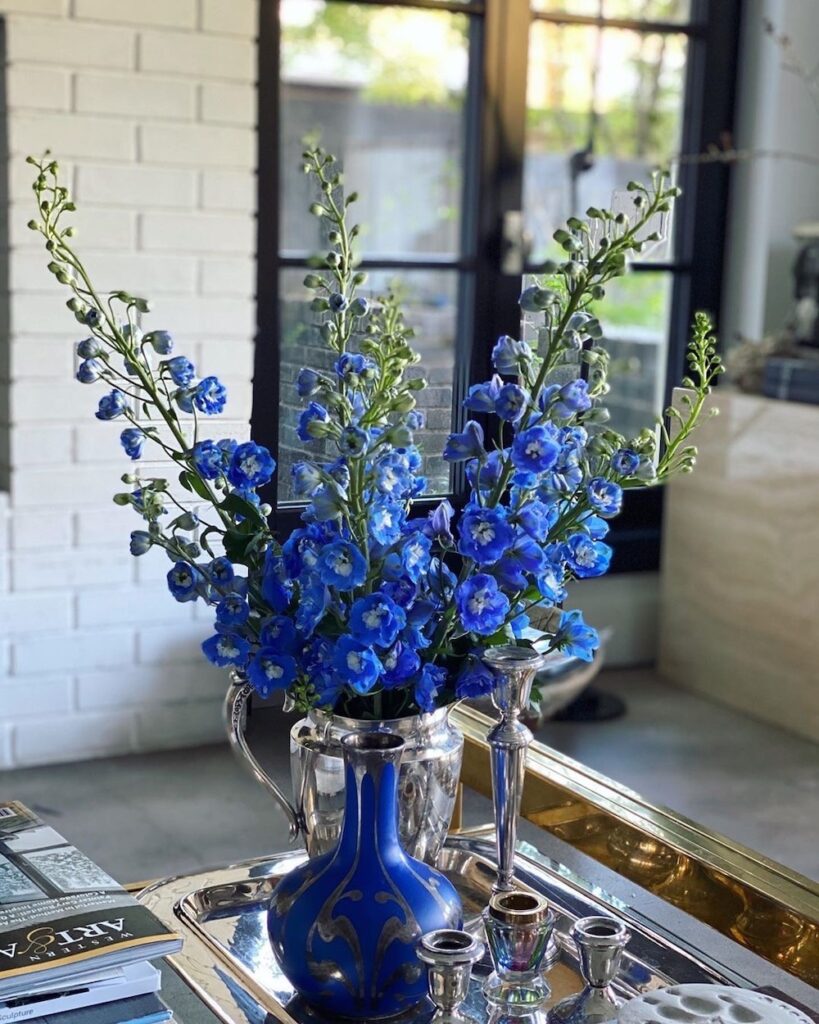
Flower Hardware is based out of Jackson, Wyoming and known for its antique garden containers and vases.
But don’t only think of delphiniums for your vases. For an anniversary party, master British florist Larry Walshe used these flowers to create a curtain dangling from the ceiling in what was one of the most spectacular arrangements I’ve ever seen.
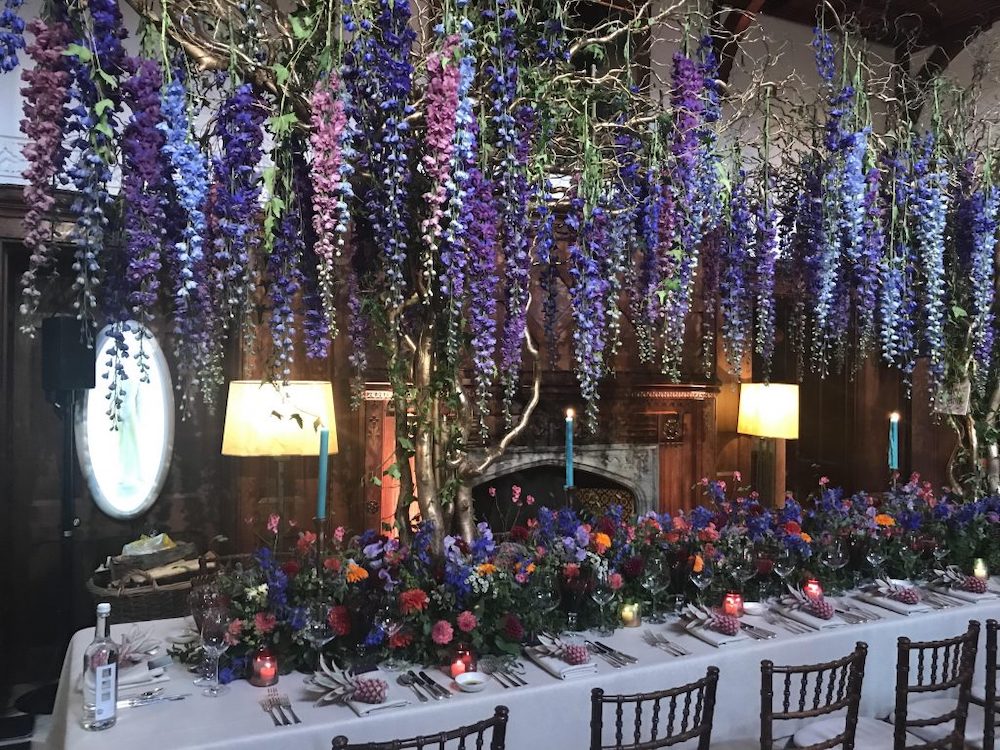
Growing Delphiniums
1) Grow in well-drained soil with full sun but must be sheltered from strong winds. They don’t like hot dry weather and prefer coos moist summers. Sudden wind or rain will upset them and you will lose blooms. They are a bit finicky.
2) Plant in the spring. With over 300 species, some can be planted from seed others from bulbs. The bulb versions are easier. As the Farmer’s Almanac advises, just dig a hole twice the diameter of the plant’s container.
3) Since it’s an alkaline-loving perennial, put lime or wood ashes over it to blossom more. You need to add some organic compost material. Whatever your favorite. Could even be cow manure.
4) Thin shoots when 3 inches high and leave a minimum of 2 or 3 shoots on each plant. Also don’t forget to stake after it grows to 12 inches.
5) Feed every few weeks. Yellow foliage or stunted growth means it needs more fertilizer. So just remember, this is a plant that likes to eat.
Also when finished blooming, cut flower stalks to the ground. Then look forward to your flowers for next year.
![]()
Jill Brooke is a former CNN correspondent, Post columnist and editor-in-chief of Avenue and Travel Savvy magazine. She is an author and the editorial director of FPD.
